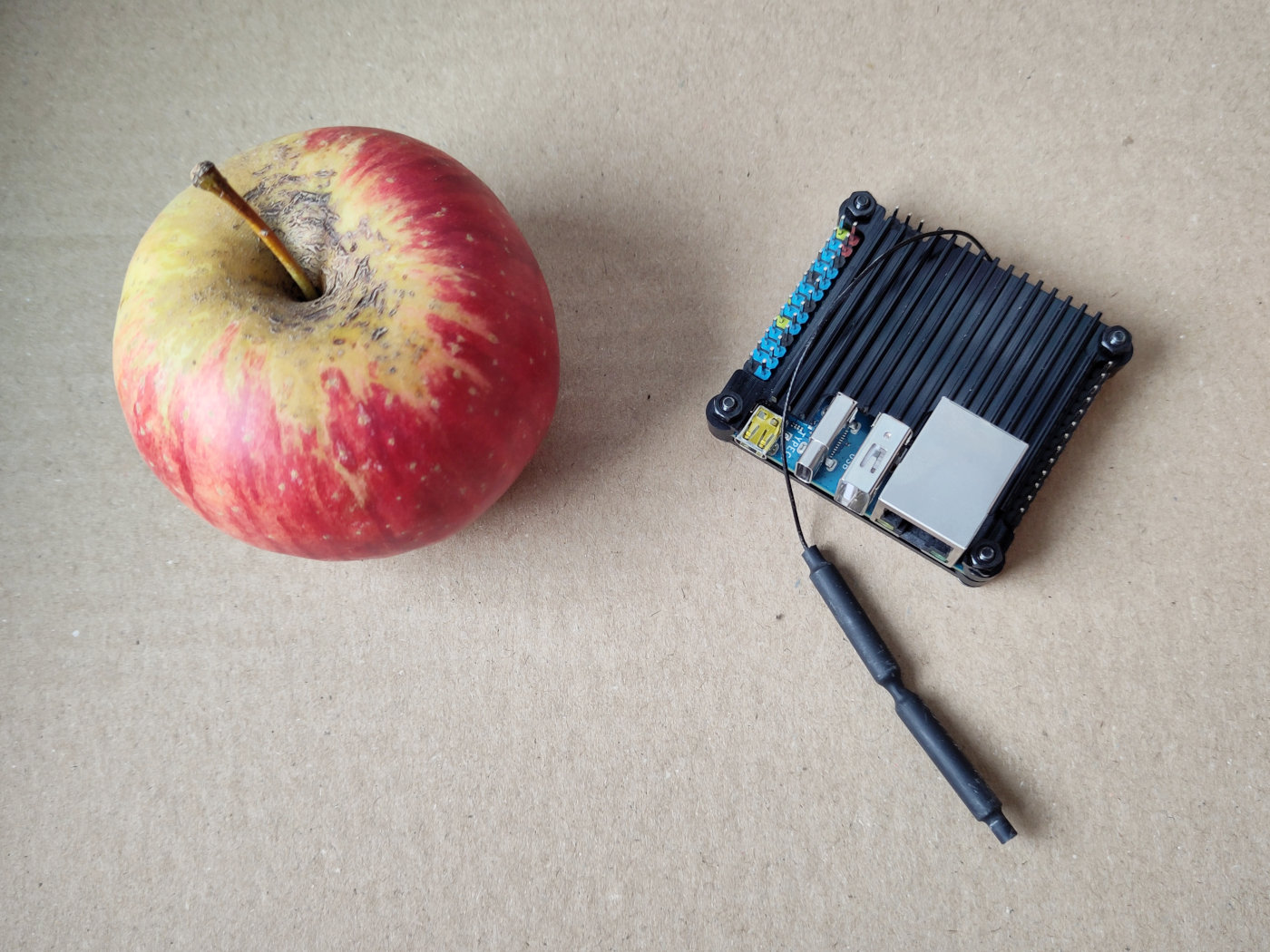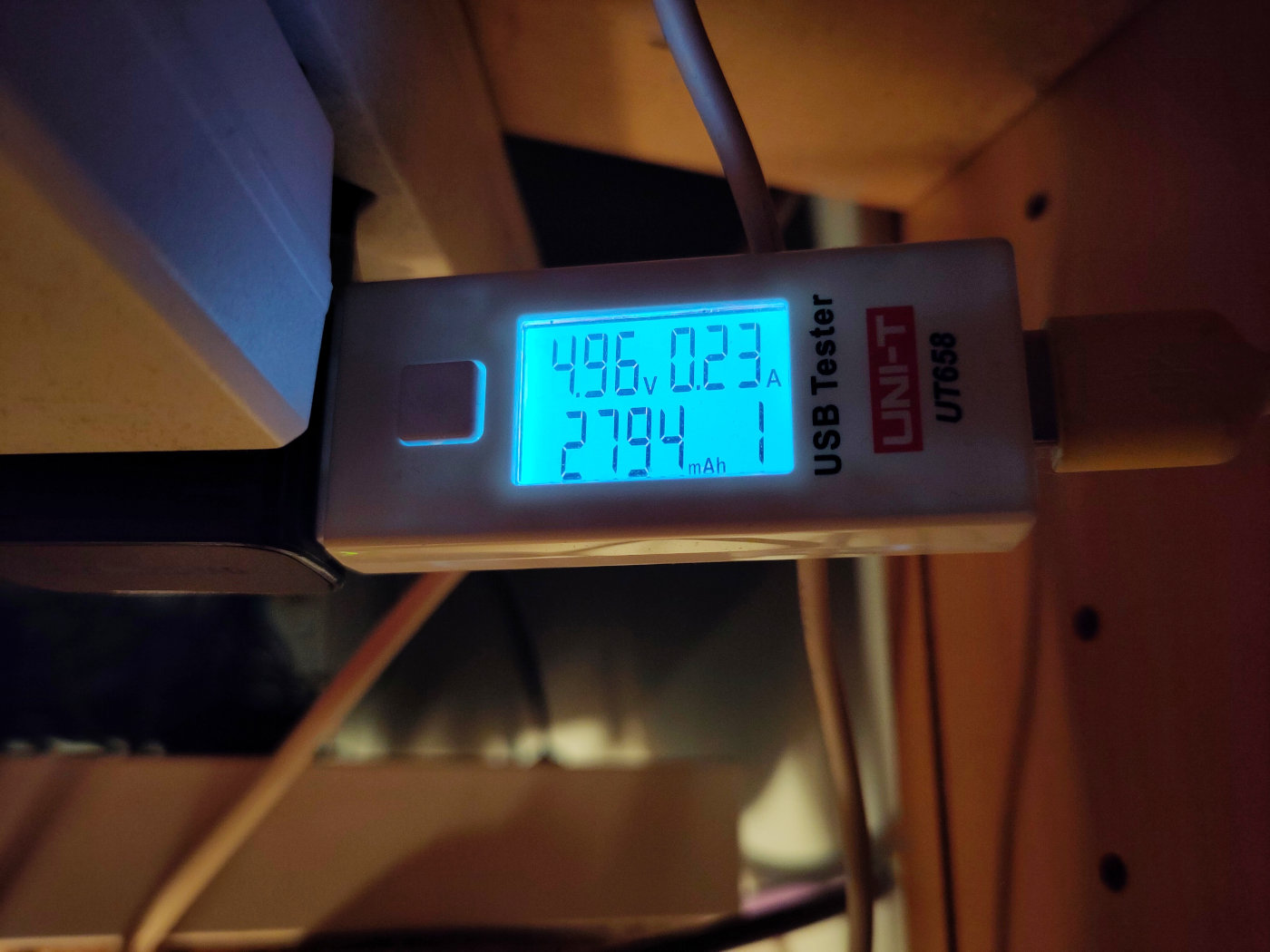I bought a Pi which is not of the Raspberry kind
I’ve been spending too much time on online marketplaces for secondhand items. Well, at least when I actually buy something from those sites, it’s already used, so I’m not pumping mindless consumption that much.
Anyway, the result of one of those crawls is this tiny device: An Orange Pi Zero 3.
I bought it for ~100PLN (25EUR) with shipping, and the seller included a WiFi antenna and a radiator covering the whole board for passive cooling. From what I’ve seen, a new one can be bought for around twice that price.
 The Orange Pi Zero 3 with an Apple for scale
The Orange Pi Zero 3 with an Apple for scale
The whole spec can be found on the product’s website. In short, it has four ARM cores, and my version comes with 4GB of RAM. So more or less a mid version of the Raspberry Pi 4. The board is physically around half the size of the Pi 4, has an Ethernet port, a single USB-A 2.0, USB-C for powering, and a micro HDMI port, the same as the Pi 4, so that I could use the dongle I already have.
Software
For the OS I went with Armbian. Armbian has a community-maintained version dedicated to this specific board in both Desktop and Server flavours.
I prefer my SBCs as the French prefer their kings, headless, so I went with the server version. I installed it to a 64GB micro SD card using the Raspberry Pi Imager app, connected the Ethernet cable (I don’t plan to use WiFi on it), power and waited for it to boot.
After booting I logged in with the default Armbian user and password (root;1234), and hey, I got a mostly standard Debian environment.
And what can I say, Debian is Debian, you get apt to install stuff, and things mostly just work. Armbian also provides a terminal tool armbian-config that you can use to configure some hardware things on the board like the WiFi, SPI, I2C and also install software.
I have not run any benchmarks, so I don’t have the numbers, but from what I’ve been using the Orange Pi so far with typical terminal tasks like updating and installing software, it seems to be a bit slower than a Raspberry Pi 4b, but much, much better than a RPi Zero. I’ve never had any other Pis so I can’t compare it for example Raspberry Pi 3.
Power Consumption
Because of my planned use-case (more on that in a moment), I was very interested in how much does the board use.
According to my testing, the Orange Pi Zero uses around 0.24A (1.2W) at idle, which is significantly higher than a Raspberry Pi Zero (less than ~0.1A), but about half of what a Pi 4b uses (the one and only Jeff Geerling wrote an article about the Pi 4b power usage)
 Power statistics after 12 hours of running.
Power statistics after 12 hours of running.
What I will use it for?
I’m thinking of using it instead of the Raspberry Pi Zero as my solar-powered webserver about which I wrote in detail in this blog post.
I’m planning to expand my solar webhosting with more websites, and having more compute power, and eight times the RAM is always nice. The question is whether the batteries will be able to handle the increased load, especially as winter approaches. If not, I will consider buying new, larger ones, the solar panel itself is already big enough (330Wp). But that is a bridge that I will consider burning when I come to it.
Issues so far
Please bear in mind that I am a total noob when it comes to SPI/I2C protocols, so probably there is a super simple solution to what I’m talking about below, I just don’t know it yet.
The first issue that I came across so far is that the GPIO connectivity seems to be non-standard.
I wanted to connect a BME280 temperature/humidity/pressure sensor to the board, as I am connecting one to the Raspberry Pi Zero. On the RPi it’s super simple, VCC to VCC, GND to GND, SCL to SCL and SDA to SDA. But the Orange Pi does not have SCL pins, just SCK. I tried connecting SCL to SCK, and using different sets of SPI/I2C pins, but it would not work. Also the armbian-config tab with the I2C/SPI configuration is rather vague.
Of course I’m not saying it’s a serious problem, I’m guessing there is a workaround for it. What I want to say is that for the Raspberry Pi Zero it is a trivial thing to connect a sensor, and for the Orange Pi it seems not to be so.
The second issue that I encountered was when I tried to install the ADS-B stack, dump1090-fa and PiAware to see if I can use the Orange Pi as an ADS-B receiver and send data to ADS-B sites like flightaware.com. The package aimed at Raspberry Pi would not want to install on the Orange Pi. Again, I am sure that there is a workaround for this, but the sheer fact that one needs to look for workaround puts the Orange Pi in a lost position.
Bottom Line
Those are my initial impressions about this SBC. So far I am positively impressed with its speed for the size and the price that I paid.
In one of the Late Night Linux podcast episodes, the hosts discussed why would anyone buy a Raspberry Pi 4, when there are similarly priced or even cheaper small computers. One of the arguments that was raised was that a Raspberry Pi is a known standard, the Raspberry Pi OS is the same for every Pi, it is a well known product and has a lot of support for peripherals out of the box. Software is written specifically for the Raspberry Pi, there is no need to reinvent the wheel, and that is why the Raspberry Pi is, for example, so useful in teaching environments.
And that’s the main issue that I see with the Orange Pi Zero 3. It is a niche SBC running a niche OS (the Orange Pi provides it’s own OS images as well, but I have not tested them), and there are things that will just not run out of the box as with the Raspberry.
So, in short, if you want an SBC that Just Works and has a ton of online support, get a Raspberry Pi. If you want to dig more into Linux on Arm, or just use the most standard stuff like nginx, the Orange Pi will be just fine with its great price to performance ratio.
As I play with it more, I will for sure have more things to say, but for now, that’s it, thanks for reading!
If you enjoyed this post, please consider helping me make new projects by supporting me on the following crowdfunding sites: